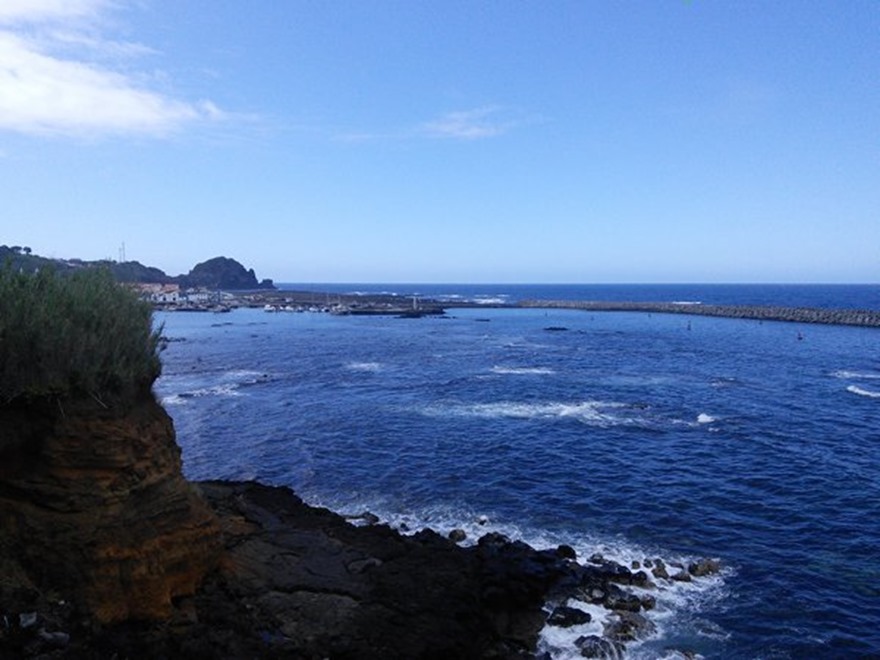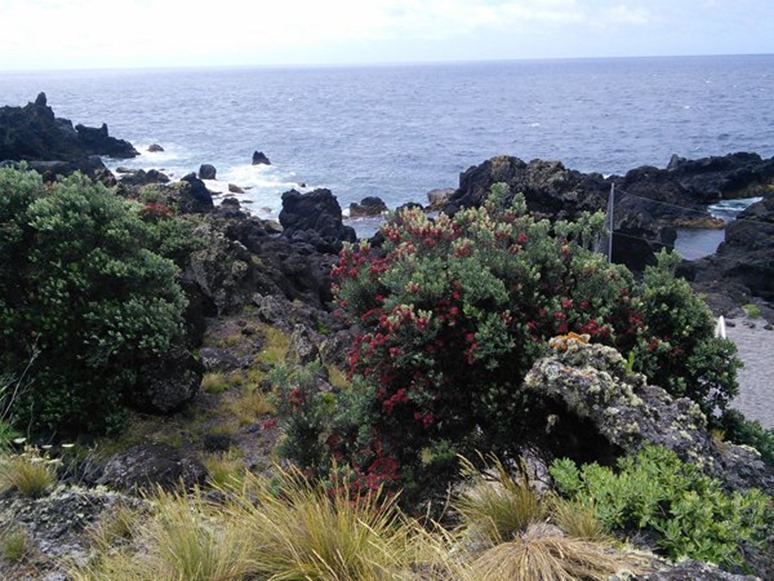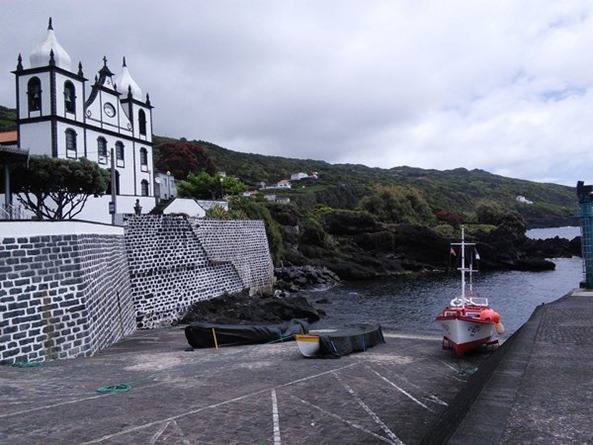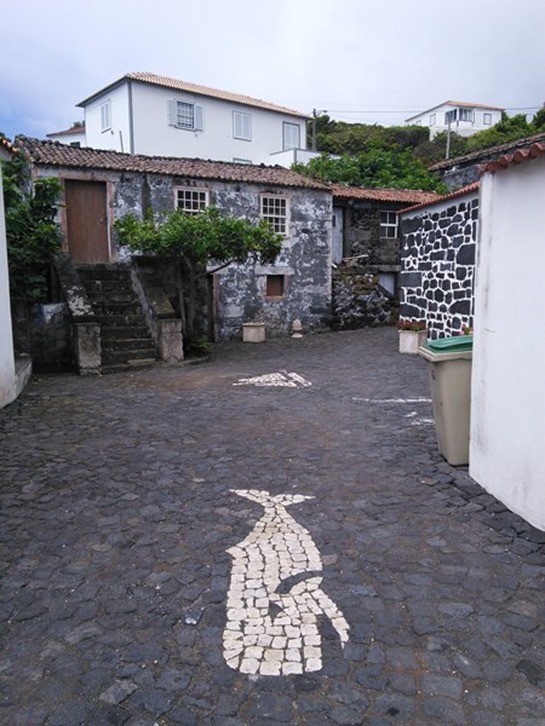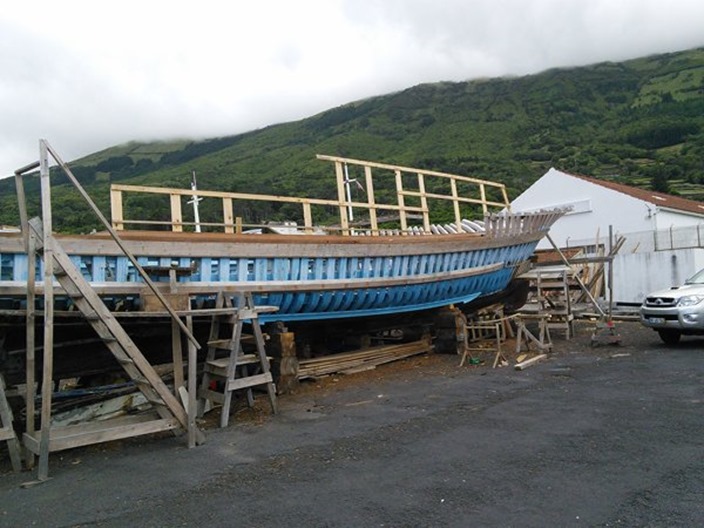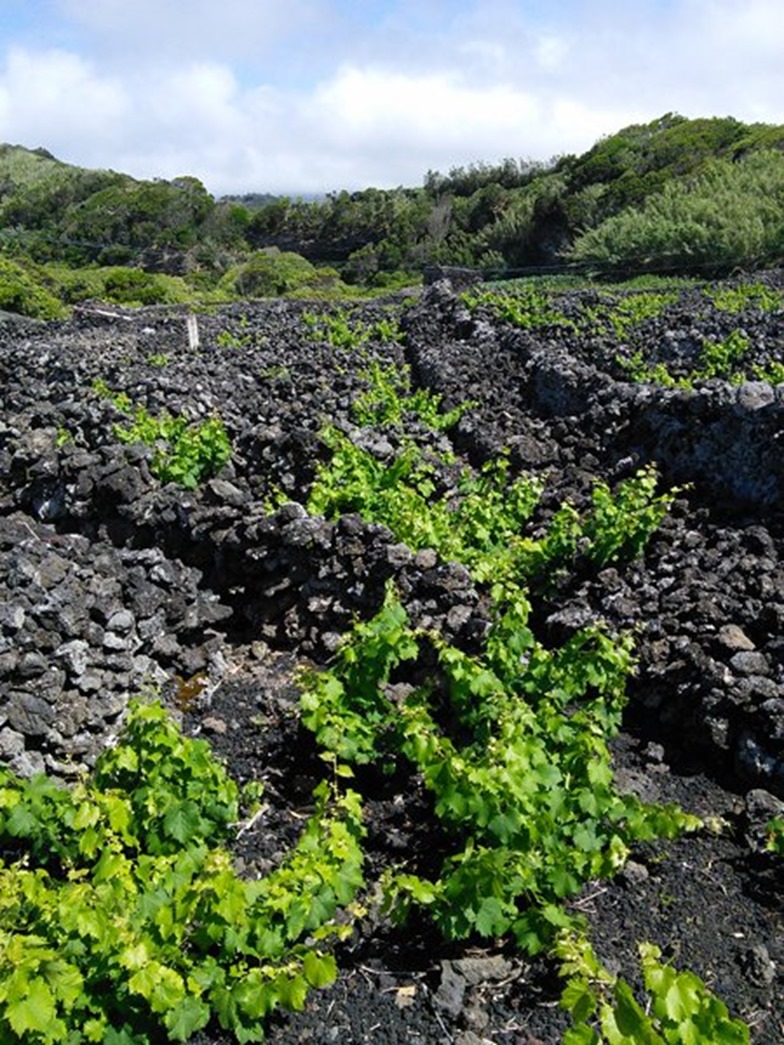Horta and Pico 38 23N 28 15W

|
We had an uneventful overnight passage to Horta and anchored without any problem in the large protected harbour. We last visited 33 years ago during an Atlantic circuit in our first boat, a 27' Vega, and wanted to go down memory lane a little. We searched in vain for the painting we had made then on the harbour wall to commemorate our visit. This is a tradition that continues to this day so every square inch has been painted and often over-painted with the designs of many nations and sailors. According to the harbour master they have about 1300 yachts through each season, and even in 1981 we had to moor 7 deep on the harbour wall. This does much for the Horta economy as there are more yachties per year that tourists which is a necessary source of income in the Azores since whaling ceased.
Now there are 2 marinas but some yachts still have to raft up so we opted to remain at anchor. Horta was a bit disappointing after Flores, it has become more commercial and too crowded with yachts. Even so we found a nice bay for a cold swim and visited one of the numerous whaling museums that are found in nearly every port through the Azores. Today whale watching has taken the place of whale killing and the traditional whalers are used in rowing races rather than chasing the whales. The old look out posts which were used to find whales for the whaling crews are still used today but now the look out contacts the whale watching teams so that visitors have good sightings.
We decided after a couple of days to move on to Pico. In contrast to Horta there is only a tiny marina with a difficult entrance. Consequently we were one of only 2 boats there. Much more to our liking!
Get in there as best you can!
The island has the impressive 2,350 metre high Pico mountain at its western end but we did not see it much as it is frequently shrouded in cloud. We hired a car for the day and did a low level tour of the island. As in Flores the roads are empty and the scenery beautiful.
The coast is rocky with old lava flows jutting out into the sea, but wherever there is a bay there is usually a tiny harbour with the means to retrieve boats using a fixed crane. They all have slips from which the whale boats were launched and up which the whale carcases were pulled for processing.
Azoreans are great swimmers and wherever there is a harbour there are usually natural swimming pools where the water is trapped and calmed by rocky lava outcrops. Watching the knees is necessary but apart from that and one which had some small Portuguese-Man-O-War, they are refreshing not to say stimulating.
All the towns have buildings picked out in black and white, as are the pavements.
Here the pavement shows a sperm whale , the commonest of the whales caught.
Fortunately there are plenty of fish in the seas and traditional boats are still built close to the slips.
The west of the island is where wines are produced which at one time were exported right across the world. The vines are grown in tiny fields which are divided by a jigsaw puzzle of volcanic boulders, giving the vines warmth and protection from strong winds. The landscapes are unique and are protected by a UNESCO designation that means the unusual scene should remain for years to come.
We ended our tour with a visit to a Co-op where the wines are made, including a rather delicious fortified wine similar to a white port. Our guide was a German who had lived in Brighton for years, run restaurants in Portugal and was now learning about Pico wines with a view to importing them to other parts of Europe...very cosmopolitan.
Needless to say this was a really enjoyable visit! We really like Pico. |
